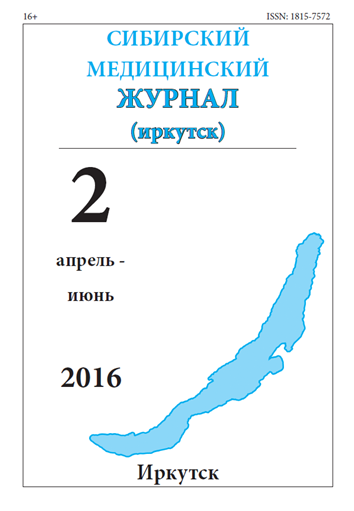ТЕНДЕНЦИИ РАЗВИТИЯ АКУШЕРСКОГО ОБРАЗОВАНИЯ ПОСЛЕ БАКАЛАВРИАТА В МОНГОЛИИ
Аннотация
Статья посвящена изучению вопроса акушерского образования в Монгольской Народной Республике, применения знаний на практике, а также интеграции их в другие области. В ходе исследования была изучены тенденции акушерского образования, а также проведена оценка степени его развития. Проанализировано соотношение профессиональных и общеобразовательных дисциплин в учебном плане подготовки акушеров, а также соотношение преподавателей и студентов.
Литература
1. Tomorrow`s Doctors: Recommendations on undergraduate medical education. Education Commettee of the General medical Council, 1993.
2. Curriculum for midwifery educational program. – WHO, 2008.
3. Global standarts for midwifery education. – ICM, 2010.
4. Сумбэрзул Н., Оюунбилэг Ш. Анагаах ухааны боловсрол. – УБ, 2001.
5. Grant J. Principles of curriculum desigh. In: Tim Swanwick, editor. Understanding medical education.Evidence, theory and practice. – Wiley-Blackwell, 2010.
6. Swanwick T. Understanding medical education: Evidence, theory and practice. – Wiley-blackwell, 2011. – P. 301-335.
7. Essential competencies for basic midwifery practice. – ICM, 2010.
REFERENCES
1. Tomorrow`s Doctors: Recommendations on undergraduate medical education. Education Commettee of the General medical Council, 1993.
2. Curriculum for midwifery educational program. – WHO, 2008.
3. Global standarts for midwifery education. – ICM, 2010.
4. Sumbjerzul N., Ojuunbiljeg Sh. Anagaah uhaany bolovsrol. – Ulaanbaatar, 2001. (in Mongolian)
5. Grant J. Principles of curriculum desigh. In: Tim Swanwick, editor. Understanding medical education.Evidence, theory and practice. – Wiley-Blackwell, 2010.
6. Swanwick T. Understanding medical education: Evidence, theory and practice. – Wiley-blackwell, 2011. – P. 301-335.
7. Essential competencies for basic midwifery practice. – ICM, 2010.
2. Curriculum for midwifery educational program. – WHO, 2008.
3. Global standarts for midwifery education. – ICM, 2010.
4. Сумбэрзул Н., Оюунбилэг Ш. Анагаах ухааны боловсрол. – УБ, 2001.
5. Grant J. Principles of curriculum desigh. In: Tim Swanwick, editor. Understanding medical education.Evidence, theory and practice. – Wiley-Blackwell, 2010.
6. Swanwick T. Understanding medical education: Evidence, theory and practice. – Wiley-blackwell, 2011. – P. 301-335.
7. Essential competencies for basic midwifery practice. – ICM, 2010.
REFERENCES
1. Tomorrow`s Doctors: Recommendations on undergraduate medical education. Education Commettee of the General medical Council, 1993.
2. Curriculum for midwifery educational program. – WHO, 2008.
3. Global standarts for midwifery education. – ICM, 2010.
4. Sumbjerzul N., Ojuunbiljeg Sh. Anagaah uhaany bolovsrol. – Ulaanbaatar, 2001. (in Mongolian)
5. Grant J. Principles of curriculum desigh. In: Tim Swanwick, editor. Understanding medical education.Evidence, theory and practice. – Wiley-Blackwell, 2010.
6. Swanwick T. Understanding medical education: Evidence, theory and practice. – Wiley-blackwell, 2011. – P. 301-335.
7. Essential competencies for basic midwifery practice. – ICM, 2010.
Опубликована
2018-04-16
Как цитировать
БАЯСГАЛАНМОНХ, Б. et al.
ТЕНДЕНЦИИ РАЗВИТИЯ АКУШЕРСКОГО ОБРАЗОВАНИЯ ПОСЛЕ БАКАЛАВРИАТА В МОНГОЛИИ.
Сибирский медицинский журнал (Иркутск) 16+, [S.l.], v. 141, n. 2, p. 82-84, апр. 2018.
ISSN 1815-7572. Доступно на: <http://smj.ismu.baikal.ru/index.php/osn/article/view/201>. Дата доступа: 25 окт. 2025
Выпуск
Раздел
Педагогика



